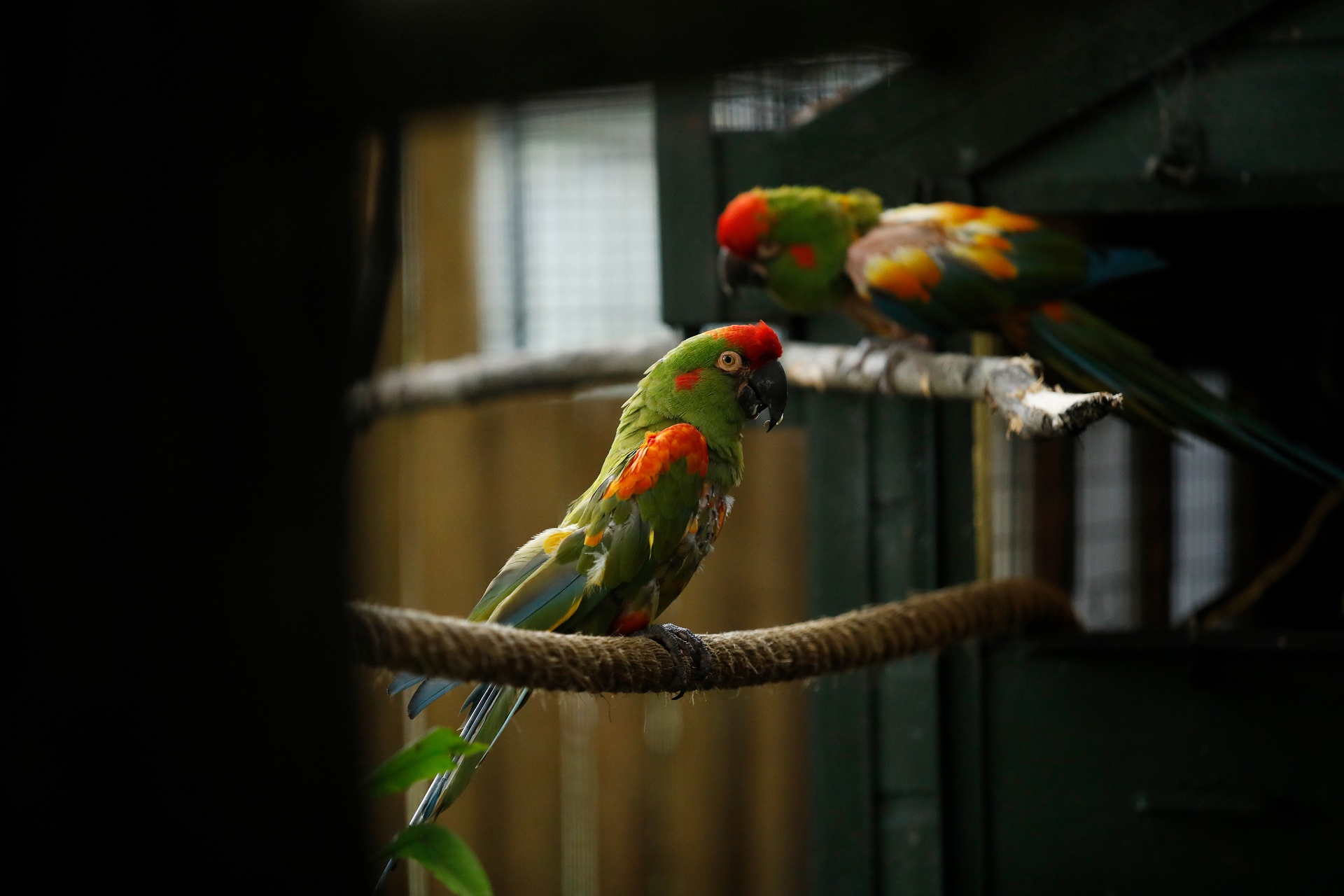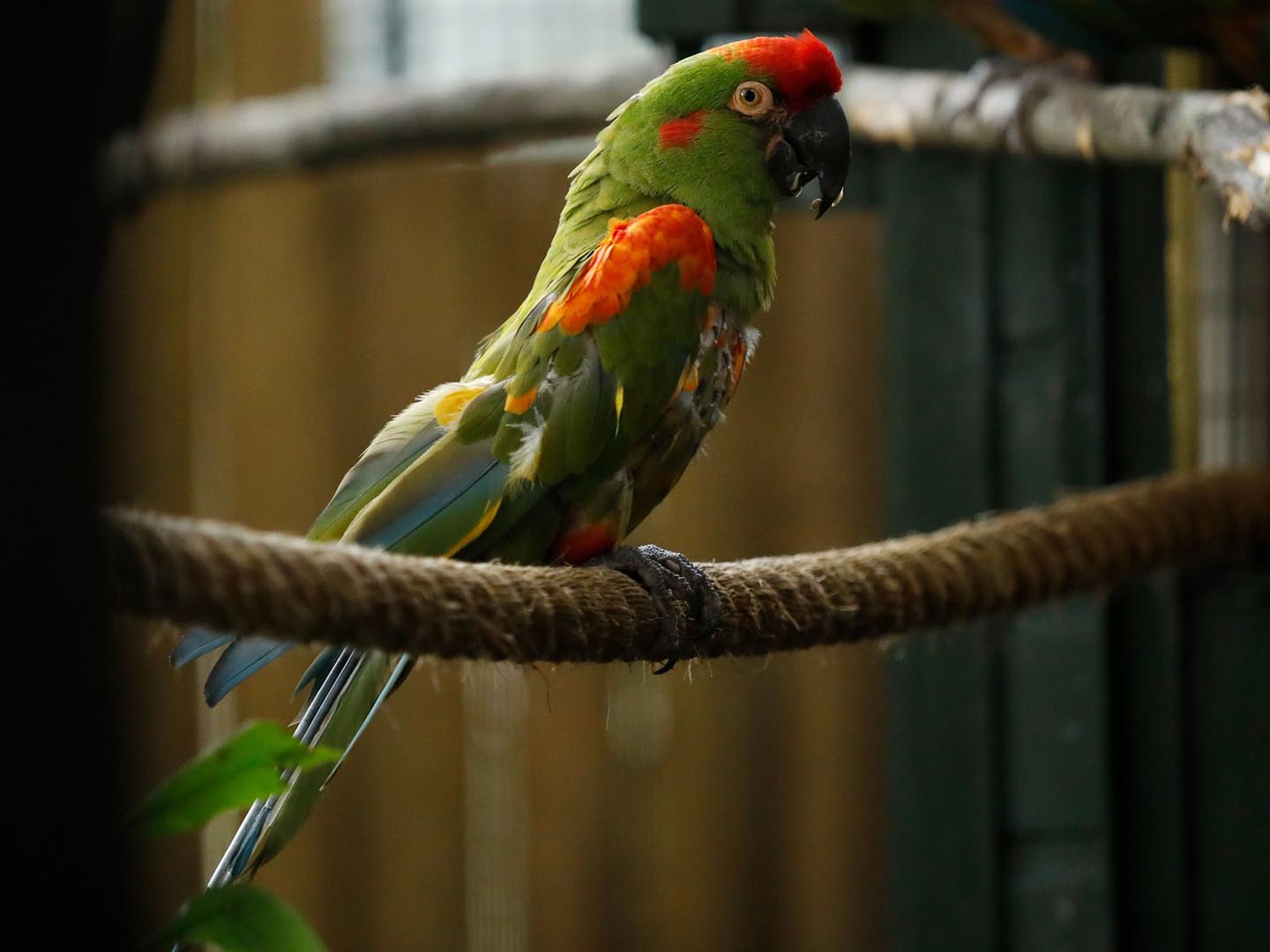Red-fronted macaw
Ara rubrogenys

Edinburgh Zoo is home to four red-fronted macaws - Soto, Oliver, Zaelia and Esmeralda.
You might have noticed that two of our macaws look a bit different. They have a condition called feather plucking, which affects parrots for a variety of reasons. These macaws have been with us since August 2018. Both birds are old and have been without feathers for most of their lives.
We manage the European Breeding Programme for red-fronted macaws and knew these birds had this condition. By bringing them to live with us we can provide them with a great quality of life, hopefully encouraging them to breed in the future.
Population
Decreasing
Diet
Herbivore
Habitat
Rainforest
Fact file
This species’ original natural habitat was dry forest, but centuries of habitat destruction has caused red-fronted macaws to be found mostly in thorn and cactus scrub
They make loud screeching sounds but also mimic human speech
These powerful fliers can reach speeds of up to 40mph

How we're helping
Like all the animals in our care our red-fronted macaws are amazing ambassadors for their relatives in the wild and help hundreds of thousands of people connect with nature every year. They encourage visitors to learn about the threats facing wildlife and the action they can take to help create a world where nature is protected, valued and loved.
As a wildlife conservation charity, we care for the animals here at the zoo and work to protect species at risk around the world. From providing expertise in genetics and veterinary health, to protecting wild places with local conservation partners, and even restoring threatened species to the wild, we are active where we are needed most.
Find out more about RZSS conservation
